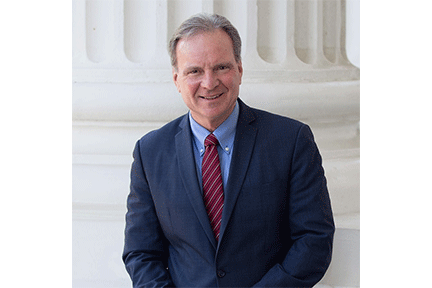Governor Gavin Newsom signed into law SB 868 authored by Senator Dave Cortese, (D-San Jose), Chair of the Senate Labor, Public Employment and Retirement Committee, to provide equity and financial stability to California’s oldest educators.
SB 868 is sponsored by the California Teachers Association (CTA), the California Retired Teachers Association (CalRTA), the Association of California Administrators, (ACSA), Delta Kappa Gamma California, and the California Federation of Teachers (CFT) with support from the California Labor Federation, AFL-CIO, the California State Teachers Retirement System (CalSTRS), and more.
Senator Dave Cortese says, “Our oldest educators have given their life to shaping our next generation and ensuring they have a better future. They deserve financial stability, peace of mind, and equity among their peers. This legislation is a result of years of work and partnership among all CalSTRS stakeholders to ensure our oldest teachers can retire with dignity, and I’m grateful to our Governor for signing SB 868 into law.”
SB 868 would equitably distribute excess funds within California State Teachers’ Retirement System’s (CalSTRS) Supplemental Benefit Maintenance Account – a special account in CalSTRS that protects retirees from inflation and holds a projected excess of $11.9 billion in funds – to California’s oldest retired teachers that are most in need.
Teachers in the CalSTRS system who retired before 1999, overwhelmingly women, receive comparatively less benefits than their peers who retired in the early 2000’s or after and yet are disproportionately impacted by inflation erosion, increased health care expenses, and other financial hardships.
CalRTA President Ron Breyer says, “Today is a great day for retired teachers. CalRTA appreciates Governor Newsom’s support for retirees by enhancing the purchasing power protection for California’s oldest retirees, who have been struggling with Social Security offsets, staggering increases in Medicare, inflation and economic uncertainty. SB 868 will add an additional layer of protection for retirees to maintain their economic independence.”
“We thank Governor Newsom today for recognizing and supporting our most senior retired educators, most of whom are women,” said CTA President E. Toby Boyd. “This bill creates an important one-time permanent adjustment in retirement benefits for those educators who retired before 1999, bringing parity and equity to their benefits. With this new law, these educators will have greater financial security and will be better able to weather the rising costs of inflation and other financial challenges.”
Editors Note
The bill was introduced in January by Cortese.
This bill would prescribe additional benefits to be paid quarterly from the Supplemental Benefit Maintenance Account, beginning July 1, 2023, to retired members and nonmember spouses, disabled members, and beneficiaries, to be made pursuant to a specified schedule. By providing for additional payments to be made from a continuously appropriated fund, this bill would make an appropriation. The bill would require the amount of these increases to be determined on July 1, 2023, as specified, and would require that amount to be increased each year commencing on July 1, 2024, but not compounded. The bill would specify that these increases are not part of the base allowance, are payable only to the extent that funds are available from the Supplemental Benefit Maintenance Account, and would state the extent to which these payments would be vested. The bill would make additional conforming and nonsubstantive changes.
Per the Bill, the quarterly supplemental payments made from the Supplemental Benefit Maintenance Account pursuant to Section 24415 as of July 1, 2023, shall be increased as follows:
Period during which retirement, disability, or death occurred: | Percentage increase: |
After Dec. 31, 1998 | 0.0% |
Between Jan. 1, 1990, and Dec. 31, 1998 | 5.0% |
Between Jan. 1, 1980, and Dec. 31, 1989 | 10.0% |
Prior to Jan. 1, 1980 | 15.0% |

